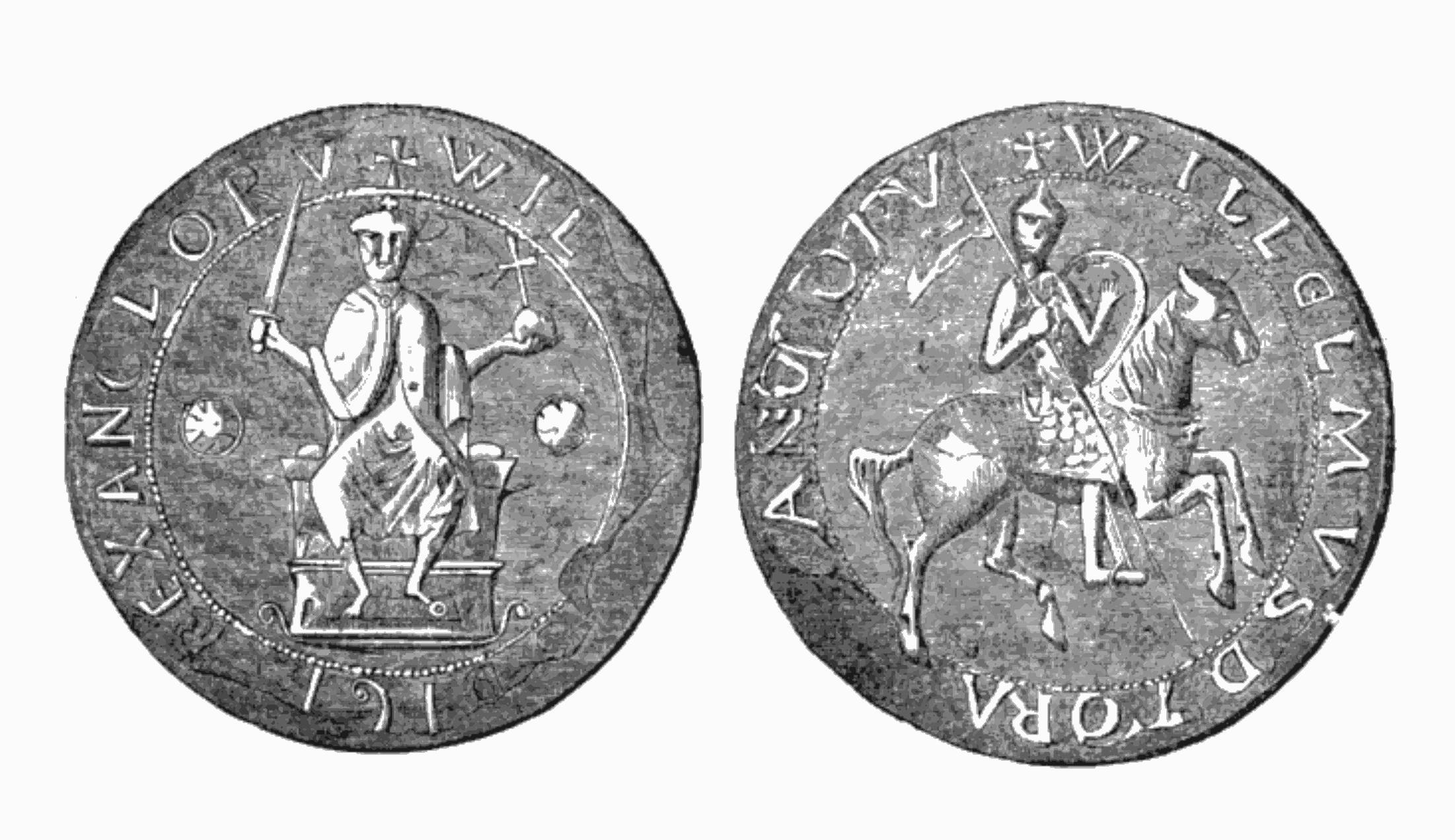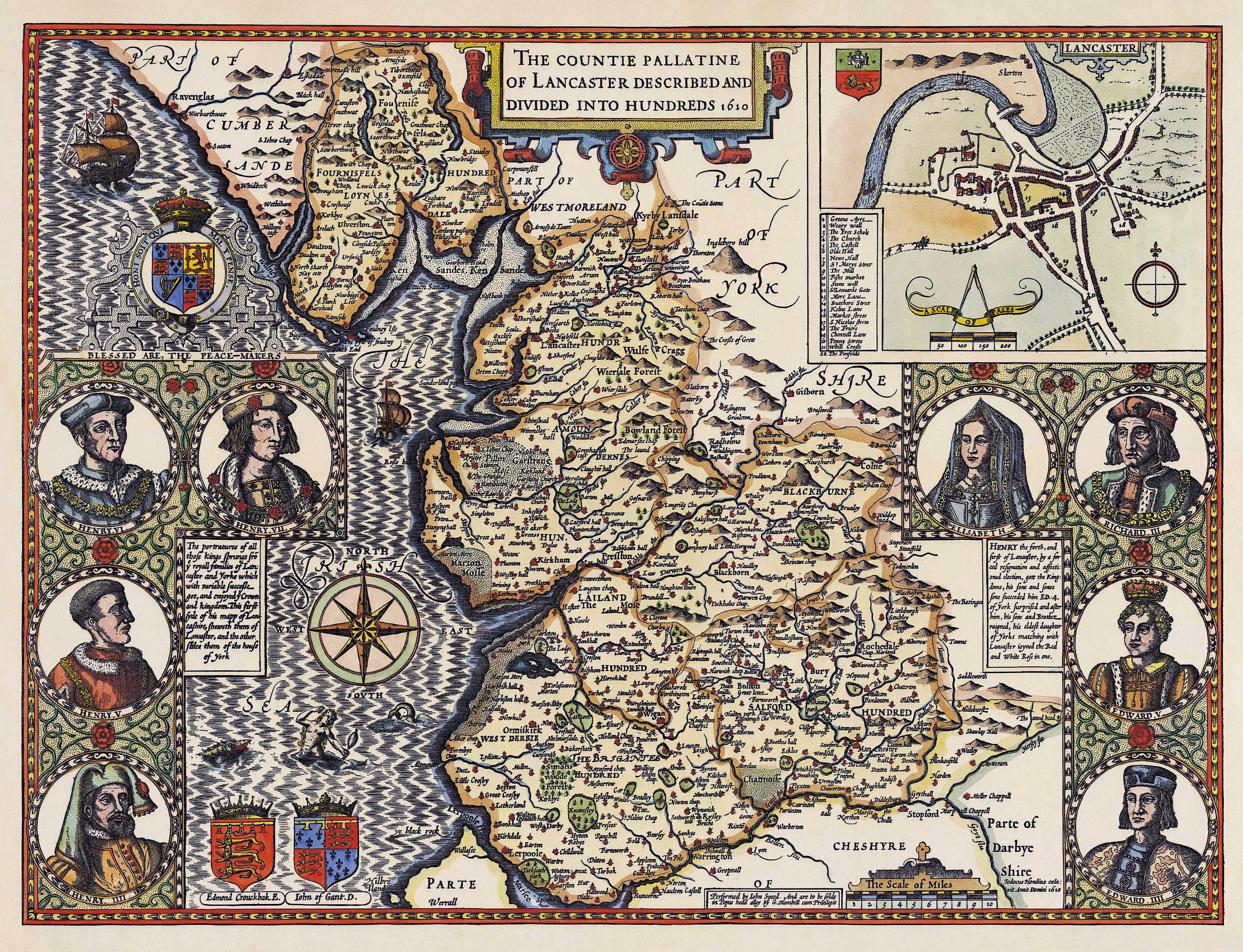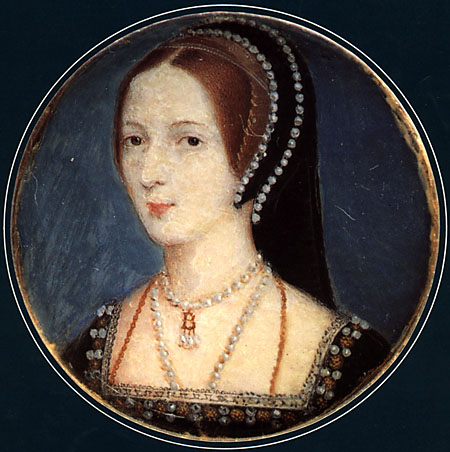|
Earl Of Pembroke
Earl of Pembroke is a title in the Peerage of England that was first created in the 12th century by King Stephen of England. The title, which is associated with Pembroke, Pembrokeshire in West Wales, has been recreated ten times from its original inception. Due to the number of creations of the Earldom, the original seat of Pembroke Castle is no longer attached to the title. , the current holder of the earldom is William Herbert, 18th Earl of Pembroke, which is the 10th creation of the title. For the past 400 years, his family's seat has been Wilton House, Wiltshire. The Earls of Pembroke also hold the title Earl of Montgomery, created for the Philip Herbert, 4th Earl of Pembroke, younger son of Henry Herbert, 2nd Earl of Pembroke before he succeeded as the 4th Earl in 1630. The current Earls of Pembroke also carry the subsidiary titles: Baron Herbert of Cardiff, of Cardiff in the County of Glamorgan (1551), Baron Herbert of Shurland, of Shurland in the Isle of Sheppey in the Cou ... [...More Info...] [...Related Items...] OR: [Wikipedia] [Google] [Baidu] |
William Herbert, 18th Earl Of Pembroke
William Alexander Sidney Herbert, 18th Earl of Pembroke, 15th Earl of Montgomery (born 18 May 1978) is an English peer. He became earl in 2003 following the death of his father, the 17th Earl. Early life Pembroke is the only son of Henry Herbert, 17th Earl of Pembroke, by his first wife, Claire. He has three older sisters (including Lady Emma Herbert) and three younger half-sisters by his father's second marriage. He was educated at Bryanston School, and then at the University of Leeds for two years, where he took a foundation course in 3D computer graphics design. He then pursued a course in industrial design at Sheffield Hallam University and became the first Herbert to graduate with a first class honours degree. In 2003, his father died, and he inherited the ancestral titles and estates, based on Wilton House, the family seat in Wiltshire. Career After graduating, Pembroke worked with Terence Conran as an industrial designer. In October 2004, a year after his father's ... [...More Info...] [...Related Items...] OR: [Wikipedia] [Google] [Baidu] |
Peerage Of England
The Peerage of England comprises all peerages created in the Kingdom of England before the Act of Union in 1707. From that year, the Peerages of England and Scotland were closed to new creations, and new peers were created in a single Peerage of Great Britain. There are five peerages in the United Kingdom in total. English Peeresses obtained their first seats in the House of Lords under the Peerage Act 1963 from which date until the passage of the House of Lords Act 1999 all Peers of England could sit in the House of Lords. The ranks of the English peerage are, in descending order, duke, marquess, earl, viscount, and baron. While most newer English peerages descend only in the male line, many of the older ones (particularly older baronies) can descend through females. Such peerages follow the old English inheritance law of moieties so all daughters (or granddaughters through the same root) stand as co-heirs, so some such titles are in such a state of abeyance between the ... [...More Info...] [...Related Items...] OR: [Wikipedia] [Google] [Baidu] |
Henry Herbert, 2nd Earl Of Pembroke
Henry Herbert, 2nd Earl of Pembroke, KG, KB (19 January 1601) was an English peer and politician. He was the nephew of Katherine Parr and brother-in-law of Lady Jane Grey through his first wife. During Elizabeth's reign, he held administrative positions in Wales. Politically, he was associated with Robert Dudley. Life He was the son of William Herbert, 1st Earl of Pembroke, and Anne Parr. His aunt was Queen Consort Katherine Parr, last wife of King Henry VIII. His uncle was William Parr, 1st Marquess of Northampton, who was an influential man during the reigns of Edward VI and Elizabeth I. Herbert was responsible for the costly restoration of Cardiff Castle. Pembroke, like other members of his family, was a man of culture. He was a special patron of antiquaries and heralds and collected heraldic manuscripts. Herbert was educated at Peterhouse, Cambridge, under Archbishop John Whitgift. He is also said to have studied at Douay. In 1554, while his father was entertai ... [...More Info...] [...Related Items...] OR: [Wikipedia] [Google] [Baidu] |
Richard De Clare, 2nd Earl Of Pembroke
Richard de Clare (c. 1130 – 20 April 1176), the second Earl of Pembroke, also Lord of Leinster and Lord Chief Justice of Ireland, Justiciar of Ireland (sometimes known as Richard FitzGilbert), was an Anglo-Norman nobleman notable for his leading role in the Anglo-Norman invasion of Ireland. Like Gilbert de Clare, 1st Earl of Pembroke, his father, Richard is commonly known by his nickname, Strongbow (). After his son and heir, Gilbert, died childless before 1189, the earldom passed through Richard's daughter Isabel de Clare, 4th Countess of Pembroke, Isabel de Clare and to her husband, William Marshal, 1st Earl of Pembroke, William Marshal. Nickname During the Middle Ages, official documents, with few exceptions, were written in Latin; in the Domesday Exchequer annals, written between 1300 and 1304 (that means, over 120 years after Richard's death), he was referred to as "''Ricardus cognomento Stranghose Comes Strugulliae"'', which translates to "Richard, known as Stranghose, e ... [...More Info...] [...Related Items...] OR: [Wikipedia] [Google] [Baidu] |
Arnulf De Montgomery
Arnulf de Montgomery (born 1066; died 1118/1122) was an Anglo-Normans, Anglo-Norman magnate. He was a younger son of Roger de Montgomerie, 1st Earl of Shrewsbury, Roger de Montgomery and Mabel de Bellême. Arnulf's father was a leading magnate in Duchy of Normandy, Normandy and Anglo-Norman England, England, and played an active part in the Anglo-Norman invasion of Wales in the late eleventh century. Following the Montgomerys' successes against the Welsh, Arnulf established himself at Pembroke, Pembrokeshire, Pembroke, where an earth and timber castle was erected, and was probably rewarded with the title Earl of Pembroke. At the turn of the twelfth century Arnulf reached height, with his lordship including much of the former Welsh Kingdom of Deheubarth as well as various lands in Yorkshire. Not long after reaching this apex of his career, Arnulf assisted his eldest surviving brother, Robert of Bellême, 3rd Earl of Shrewsbury, Robert de Bellême, in a rebellion against Henry I ... [...More Info...] [...Related Items...] OR: [Wikipedia] [Google] [Baidu] |
William Rufus
William II (; – 2 August 1100) was King of England from 26 September 1087 until his death in 1100, with powers over Normandy and influence in Scotland. He was less successful in extending control into Wales. The third son of William the Conqueror, he is commonly referred to as William Rufus (' being Latin for "the Red"), perhaps because of his ruddy appearance or, more likely, due to having red hair. William was a figure of complex temperament, capable of both bellicosity and flamboyance. He did not marry or have children, which – along with contemporary accounts – has led some historians to speculate on homosexuality or bisexuality. He died after being hit by an arrow while hunting. Circumstantial evidence in the behaviour of those around him – including his younger brother Henry I – raises strong, but unproven, suspicions of murder. Henry immediately seized the treasury and had himself crowned king. Historian Frank Barlow observed William was " rumbustious, dev ... [...More Info...] [...Related Items...] OR: [Wikipedia] [Google] [Baidu] |
County Palatine Of Pembrokeshire
In England, Wales and Ireland a county palatine or palatinate was an area ruled by a hereditary nobleman enjoying special authority and autonomy from the rest of a kingdom. The name derives from the Latin adjective ''palātīnus'', "relating to the palace", from the noun ''palātium'', "palace". It thus implies the exercise of a ''quasi''-royal prerogative within a county, that is to say, a jurisdiction ruled by an earl, the English equivalent of a count. A duchy palatine is similar but is ruled over by a duke, a nobleman of higher precedence than an earl or count. The nobleman swore allegiance to the monarch yet had the power to rule the county largely independently of the king. It should therefore be distinguished from the feudal barony, held from the king, which possessed no such independent authority. Rulers of counties palatine created their own feudal baronies, to be held directly from them '' in capite'', such as the Barony of Halton. County palatine jurisdictions were ... [...More Info...] [...Related Items...] OR: [Wikipedia] [Google] [Baidu] |
Henry VII Of England
Henry VII (28 January 1457 – 21 April 1509), also known as Henry Tudor, was King of England and Lord of Ireland from his seizure of the crown on 22 August 1485 until his death in 1509. He was the first monarch of the House of Tudor. Henry was the son of Edmund Tudor, 1st Earl of Richmond, and Lady Margaret Beaufort. His mother was a great-granddaughter of John of Gaunt, an English prince who founded the Lancastrian cadet branch of the House of Plantagenet. His father was the half-brother of the Lancastrian king Henry VI. Edmund Tudor died three months before his son was born, and Henry was raised by his uncle Jasper Tudor, a Lancastrian, and William Herbert, a supporter of the Yorkist branch of the House of Plantagenet. During Henry's early years, his uncles and the Lancastrians fought a series of civil wars against the Yorkist claimant, Edward IV. After Edward retook the throne in 1471, Henry spent 14 years in exile in Brittany. He attained the throne when his f ... [...More Info...] [...Related Items...] OR: [Wikipedia] [Google] [Baidu] |
Jasper Tudor
Jasper Tudor, Duke of Bedford (c. November 143121 December 1495) was the uncle of King Henry VII of England and a leading architect of his nephew's successful accession to the throne in 1485. He was a member of the Tudor family of Penmynydd. Jasper Tudor's coat of arms, granted to him by his maternal half-brother, King Henry VI, quarters the three lilies of France with the three lions of England, with the addition of a ''bordure azure with martlets or'' (that is, a blue border featuring golden martlets). Family and early life Jasper was the second son of Sir Owen Tudor and the former queen Catherine of Valois, the widow of King Henry V of England. He was thus half-brother to Henry VI. Through his father, Jasper was a descendant of Ednyfed Fychan, Llywelyn the Great's renowned chancellor. His mother was a daughter of King Charles VI of France. Jasper was born at the bishop of Ely's manor at Hatfield, Hertfordshire, in 1431, his parents' second child. After the death of Ja ... [...More Info...] [...Related Items...] OR: [Wikipedia] [Google] [Baidu] |
Anne Boleyn
Anne Boleyn (; 1501 or 1507 – 19 May 1536) was List of English royal consorts, Queen of England from 1533 to 1536, as the Wives of Henry VIII, second wife of King Henry VIII. The circumstances of her marriage and execution, by beheading for treason, made her a key figure in the political and religious upheaval that marked the start of the English Reformation. Anne was the daughter of Thomas Boleyn, 1st Earl of Wiltshire, Thomas Boleyn (later Earl of Wiltshire), and his wife, Elizabeth Boleyn, Countess of Wiltshire, Elizabeth Howard, and was educated in the Seventeen Provinces, Netherlands and Kingdom of France, France. Anne returned to England in early 1522, to marry her cousin James Butler, 9th Earl of Ormond; the marriage plans were broken off, and instead, she secured a post at court as maid of honour to Henry VIII's wife, Catherine of Aragon. Early in 1523, Anne was secretly betrothed to Henry Percy, 6th Earl of Northumberland, Henry Percy, son of Henry Percy, 5th Ear ... [...More Info...] [...Related Items...] OR: [Wikipedia] [Google] [Baidu] |
Marquess Of Pembroke
Marquess of Pembroke was a title in the Peerage of England created by King Henry VIII for his future spouse Anne Boleyn. Background The then extinct title of Earl of Pembroke had been very significant for the House of Tudor. It was held by Henry VIII's grand-uncle, Jasper Tudor, and it referred to the birthplace of King Henry VII. Henry VIII decided to raise his lover to the dignity of a marquess prior to finally marrying her. He chose to grant her the Marquessate of Pembroke. Creation On Sunday, 1 September 1532, Anne Boleyn was granted the Marquessate of Pembroke and land, mostly in Wales, worth over £1,000. The investiture ceremony was performed by Henry VIII himself in Windsor Castle. The ceremony was an elaborate affair, witnessed by the highest ranking peers and clergy in the kingdom, including Thomas Boleyn, 1st Earl of Wiltshire and Thomas Howard, 3rd Duke of Norfolk, Anne's father and uncle respectively; Charles Brandon, 1st Duke of Suffolk (Henry's brother-in-law); ... [...More Info...] [...Related Items...] OR: [Wikipedia] [Google] [Baidu] |
Henry VIII Of England
Henry VIII (28 June 149128 January 1547) was King of England from 22 April 1509 until his death in 1547. Henry is known for his Wives of Henry VIII, six marriages and his efforts to have his first marriage (to Catherine of Aragon) annulled. His disagreement with Pope Clement VII about such an annulment led Henry to initiate the English Reformation, separating the Church of England from papal authority. He appointed himself Supreme Head of the Church of England and dissolution of the monasteries, dissolved convents and monasteries, for which he was List of people excommunicated by the Catholic Church, excommunicated by the pope. Born in Greenwich, Henry brought radical changes to the Constitution of England, expanding royal power and ushering in the theory of the divine right of kings in opposition to papal supremacy. He frequently used charges of treason and heresy to quell dissent, and those accused were often executed without a formal trial using bills of attainder. He achi ... [...More Info...] [...Related Items...] OR: [Wikipedia] [Google] [Baidu] |







